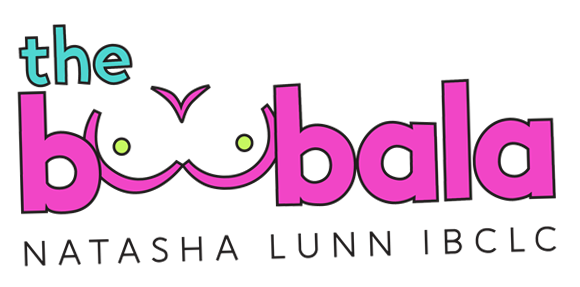Page Content
- How much milk is produced by the breast in one day?
- What is the 5 5 5 rule for breast milk?
- How much milk should I be producing in 24 hours?
- How many ounces of breastmilk is considered an oversupply?
- How quickly do breasts refill with milk?
- Do bigger breasts produce more milk?
- What time of day is milk supply highest?
- Will pumping every 2 hours increase milk supply?
- How much milk can one boob hold?
- How many ounces is 15 minutes of breastfeeding?
Understanding Daily Breast Milk Production
Breast milk production is a remarkable physiological process that varies significantly among individuals and is influenced by several factors, including the baby’s age, feeding frequency, and the mother’s overall health. On average, a breastfeeding mother produces between 25 to 35 ounces (approximately 750 to 1,000 milliliters) of milk per day during the first few months postpartum. This amount can fluctuate based on the baby’s needs and the mother’s milk supply.
Factors Influencing Milk Production
1. Baby’s Age and Nutritional Needs: The amount of milk a mother produces is closely tied to her baby’s age and nutritional requirements. Newborns typically consume smaller amounts more frequently, while older infants may take larger quantities less often. As the baby grows, the demand for milk increases, prompting the mother’s body to adjust production accordingly.
2. Feeding Frequency: The principle of supply and demand plays a crucial role in lactation. The more frequently a baby feeds, the more milk the mother will produce. This is because breastfeeding stimulates the mammary glands, signaling the body to create more milk.
3. Physiological Changes: After childbirth, a mother’s milk supply usually increases significantly between 2 to 4 days postpartum, a phase often referred to as “milk coming in.” This is when the body transitions from producing colostrum, a nutrient-rich pre-milk, to mature breast milk.
4. Health and Nutrition of the Mother: A mother’s overall health, hydration, and nutrition can also impact milk production. Adequate caloric intake and hydration are essential for maintaining a healthy milk supply.
Conclusion
In summary, while the average daily breast milk production ranges from 25 to 35 ounces, this figure can vary widely based on individual circumstances. Understanding the dynamics of lactation can help mothers navigate their breastfeeding journey, ensuring they meet their baby’s nutritional needs effectively.
How much milk is produced by the breast in one day?
For example, a more typical amount of milk for a mom to produce is 570-900 mL/19.27-30.43 oz a day. The numbers also don’t show milk supply for newborns, only 1-6-month-olds. But we’d caution moms from getting too wrapped up in specific quantities.
What is the 5 5 5 rule for breast milk?
Something I recommend to moms is the 5-5-5 rule. Try and use milk within five hours at room temperature, five days in the fridge, and by five months in the freezer.
How much milk should I be producing in 24 hours?
25-35 oz.
Full milk production is typically 25-35 oz. (750-1,035 mL) per 24 hours. Once you have reached full milk production, maintain a schedule that continues producing about 25-35oz of breastmilk in a 24 hour period. Each mom and baby are different, plan your pumping sessions around what works best for the two of you.’);})();(function(){window.jsl.dh(‘XKJoZ8rGMfyHwPAP89mtmQY__40′,’
How many ounces of breastmilk is considered an oversupply?
Overproduction Disrupts the Distribution of Fat & Lactose
When feeding directly at breast, the average 1-9 month old will take about 2.5-5 oz of breastmilk per feed. In the context of oversupply, a woman may have 6 or more ounces in one breast alone.
How quickly do breasts refill with milk?
- If you’re feeding baby on demand, a noticeable increase in milk supply can be seen within 2–7 days but it is different for everyone.
- Adding a pumping session between feeds while continuing to breastfeed on demand can accelerate the process and a substantial increase can be seen within 1–3 days.
Do bigger breasts produce more milk?
Truth: Breast size has nothing to do with milk production
Breast size depends on how much fatty tissue you have. The larger the breast, the more fatty tissue and vice versa.
What time of day is milk supply highest?
This is because the levels of the hormone prolactin, which drives milk production, are higher overnight. Prolactin levels seem to be highest between 2-6am. Using a dummy or pacifier to settle your baby can hide some of their early feeding cues, interfering with responsive breastfeeding.
Will pumping every 2 hours increase milk supply?
Pump more often, from both breasts
Many women wonder how often they should pump. A general guideline is to pump every three hours. But if you’re trying to produce more breast milk, you can: Try pumping both breasts for 15 minutes every two hours for 48-72 hours.
How much milk can one boob hold?
Studies show some women have as few as 3 milk lobules/ducts and others as many as 15. As a result the amount of milk that can fit in a woman’s breasts varies – anywhere from 2.5oz to 5oz combined is average but some women can store as much as 10 oz in one breast (this is very unusual).
How many ounces is 15 minutes of breastfeeding?
Average Milk Supply
If you pump within 15-20 minutes of completing a breastfeeding session, you will probably get one to two ounces combined.

